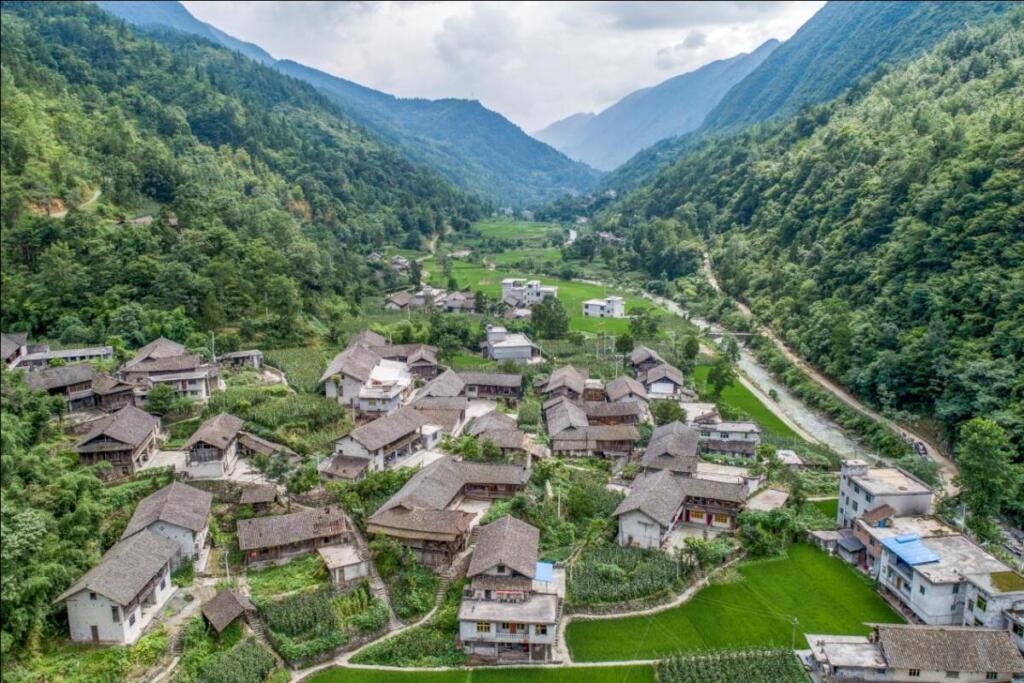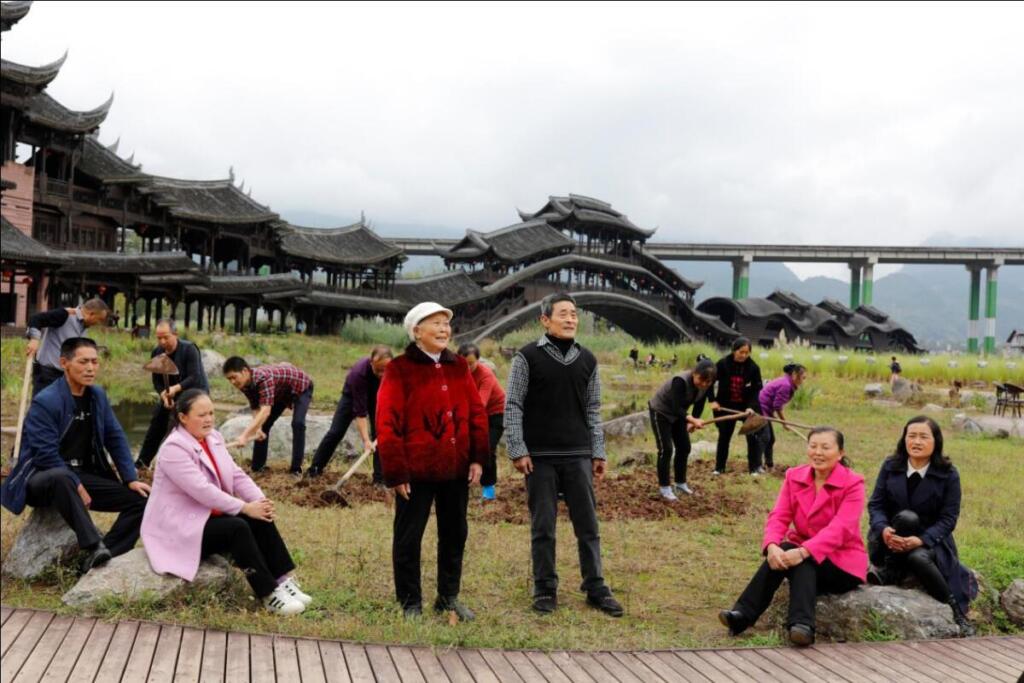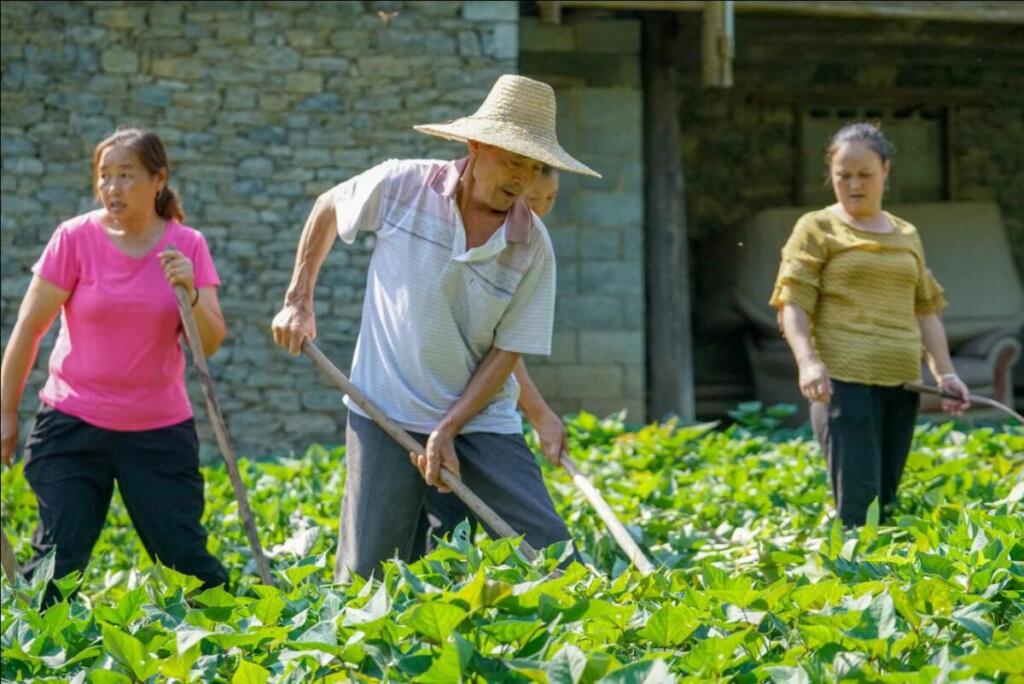"Ten-li Nanxi River winds between two steep cliffs; all people can sing beautiful chants." Anyone who knows the folk song cannot suppress his yearning for the Nanxi Ravine.
I first heard this song a long time ago. Back then I already knew that Nanxi Haozi, a genre of work songs in China, enjoyed widespread popularity in Chongqing. These kinds of songs have also been included in China's list of intangible cultural heritages.
This, fueled my desire to visit this songs’ birthplace, the Nanxi Ravine. A landmark that lies near Echi, a Town of the Qianjiang District, southwest China's Chongqing. I wanted to listen to those original work songs, and passionate Shan'ge mountain songs.
The Nanxi Ravine is a long, secluded and serene gorge, where the crystal clean Nanxi River wanders through the bottom of this ravine. Towering mountains roll alongside the river, with bankside stilt houses hiding behind ancient trees. Tujia and Miao people make up the majority of the population; they have lived on this mysterious land for generations.
On the precipice hangs a half-meter wide winding trail, the only access to the outside world. This place, in spite of its tranquillity, is the cradle of the sonorous Nanxi Haozi. Work songs and calls chanted by the singers themselves, to the mountains, to the river, and even to the stilt houses. How amazing!
Resounding and silvery, the Haozi circles around the farmland beside the river fly across the rocks on steep mountainsides, running towards the edge of each precipice, piercing through the thick forest.
Hard working mountain people, when they find that their cattle is tired, their tools are getting blunt, or they themselves are too exhausted to clench their choppers, they will take a rest, wiping the sweat from their foreheads and chanting simple, varying rhythms. Perceivable but indescribable.
They yell at the vast mountainsides, the sheer precipices, the trickling river, and the blue sky. Anyone who hears the sound in the surrounding areas will join in, echoing the melody.
It's a collective breath made of a unified harmony, sung to relieve the fatigue of labor, suffusing the imposing cliffsides and graceful streams with its melody just as it does the joys and sorrows of the men and women, young and old, who call the Nanxi Ravine their home.
Passed down through the generations, this most distinctive and intense variety of ethnic music is now popular not only in Chongqing, but across the entire country.
I recall a winter day in Nanxi Ravine during the agricultural off-season. I sat with seven or eight elders around the fire pit in Yang's house, the earthen bowls of home-brewed liquor before us penetrating the air with their potent fragrance.
Beyond the window, a roaring gust of wind sounded through the valley like a giant horn. As the wind rose and the horn sounded, so did our spirits rise with it.
Emptying his bowl of corn liquor in one last gulp, an elderly man suddenly stood up, and with one cry—"Ye hei...!"—the curtain had risen on the haozi performance.
The tune started very high, and at the end it cycled on and on, long and lingering, like an eagle soaring up from the bottom of the gorge, spreading its wings to circle across a single line of blue sky above.
Without thinking, several men to his side joined the chant, their voices deep and firm, ringing low and smooth like echoes through the mountains.
They were soon joined by the elderly women's clear and melodious tones—sometimes soft and sweet like waters from a mountain spring; sometimes rising high and elegant like birds soaring between the clouds.
In that moment, it all came together: the lead singer, the low- and high-pitched accompanying voices, rising and falling, uninterruptedly weaving a breath-taking tapestry of sounds.
The singers' voices even overtook the roar of the gale outside. The songs came one right after another. Encouraged by the liquor, I couldn't help but start shouting the chants along with them.
Neighbouring women, children, and elderly arrived one after the other at the house, to mingle by the fire pit. Their addition only made the singing louder, the atmosphere livelier, and the drinks disappear more quickly.
Not until both the fire and the lead vocalist were fully exhausted did the crowd disperse.
This experience left me with an inexpressible joy. I knew about the Nanxi haozi—that it depicted the lives of Tujia and Miao ancestors, that through spans of generations it had been seared into the hearts and souls of the mountain residents, that it flowed through their veins and in their dreams, deeply enriching their cultural world.
Whether it's a holiday, wedding or funeral—or even just walking footpaths through the fields, along the riverbank, through forests of corn, beneath the stilt houses' windows, or lounging on a heated brick bed—Nanxi Ravine people are all apt to lose themselves in a haozi chant.
Truly, Nanxi haozi are the mountain residents' most constant and lifelong companions. In this otherwise unearthly tranquillity, haozi spiral up through the valley, singing the mountains awake, strengthening its young men's arms and flushing the faces of its young women.
The best performances seem to emerge while working. Craving to learn Nanxi haozi myself, I sought out an experienced octogenarian and requested his mentoring on the matter.
The old singer told me that Nanxi haozi required a lead singer, a male chorus, and a female chorus. The lead singer's voice should be cool and refreshing but also able to shout loudly at high pitches; the male voices needed to be deep and low, resounding and forceful; the female voices needed to be high, sharp and penetrating.
During a performance, one should listen for a kind of sustained voice that begins spiraling up. At that point, the other voices should move in response, resulting in that sense of disorderly rise and fall, a never-abating undulation.
Stepping into the mysterious world of the Nanxi Ravine, I not only bore witness to the wonder of the Nanxi haozi chants, I also learned a good number of Nanxi shan'ge ("mountain songs"). There was one autumn night I will never forget.
The sky over Nanxi Ravine was ignited by crackles of flame from both torches and a bonfire.
Men and women, old and young—hundreds of faces were gathered together, vividly lit up by the flickering blaze. The altar before the fire was crowded with fruits, dough figurines, entire goats, pigs' heads, and other offerings.
One by one, the respected elders made offerings to Heaven, Earth, and ancestors.
Then the mountain people took up their manghao, cow horns, bamboo blocks, copper bells, reed flutes, gongs and cymbals, and by this myriad of tones, they moved around the roaring fire, turning their feet and twisting their waists with complete passion and in full revelry of the ancient rites.
They shouted haozi and sang their distinctive Nanxi shan'ge.
I was pulled into the exultant crowd, one moment eating roasted mutton and drinking corn liquor with them, the next shouting with them, singing with them, dancing with them. It seemed that time had suspended itself as we kept drinking, kept yelling, kept singing...
Although physically I've returned to the city, it's as though my soul was left there, in the Nanxi Ravine. Oftentimes at home I will chant Nanxi haozi, sing Nanxi shan'ge, and dance Nanxi dances.
What I've found to have left the most lasting impression on me, are two passionate Nanxi love songs:
Little yang bird in the mountains; many places to fly, but nowhere to roost Is there a kind girl out there, to build a nest and invite you in?
Butterfly fluttering in the sky; many places to fly, but nowhere to alight Borrow a moment in the maiden's garden; rest without harming either petal or leaf.

Mysteries of the songs of the Nanxi Ravine
- Tianlong
- Category: Discover China
powered by social2s







Follow us